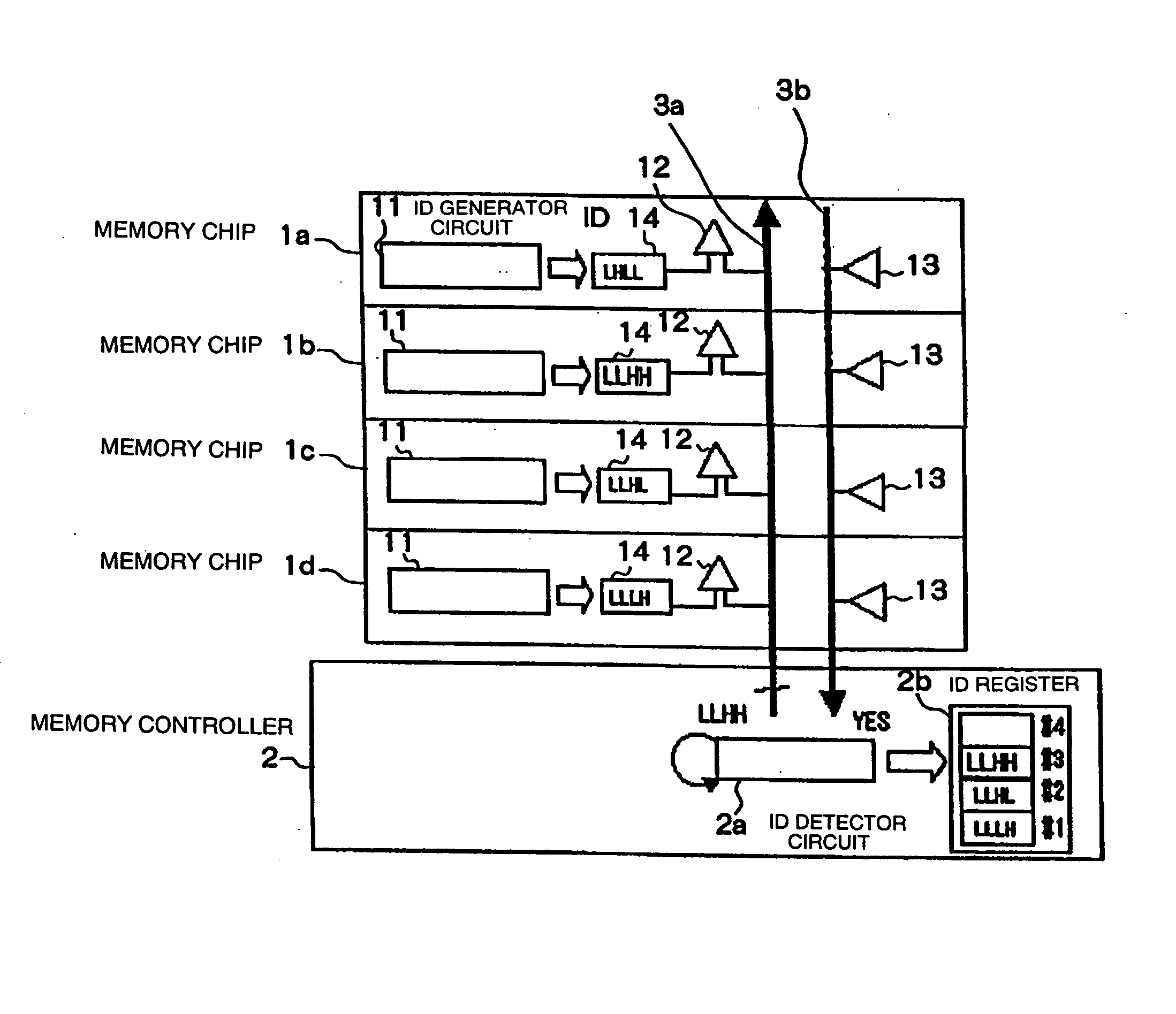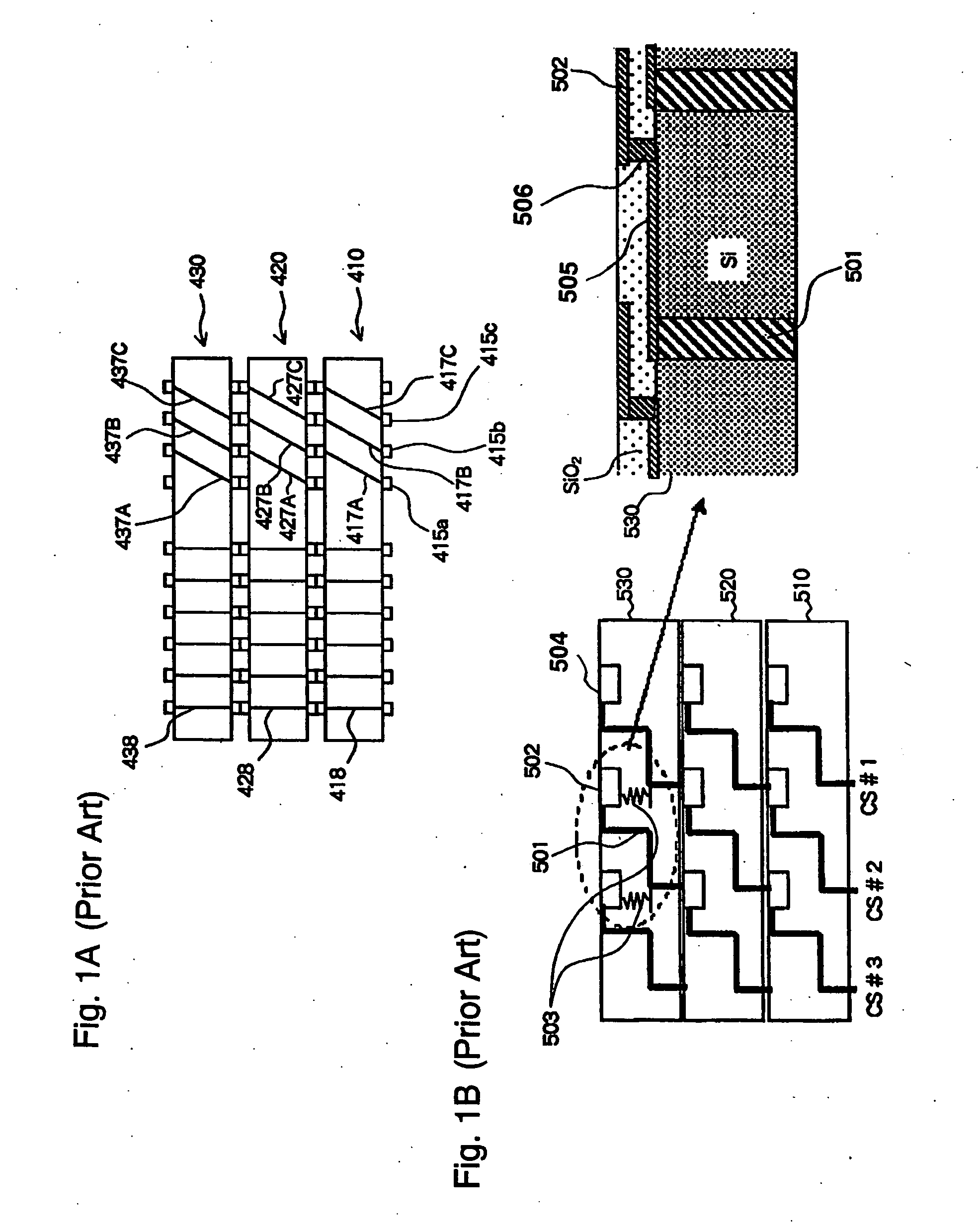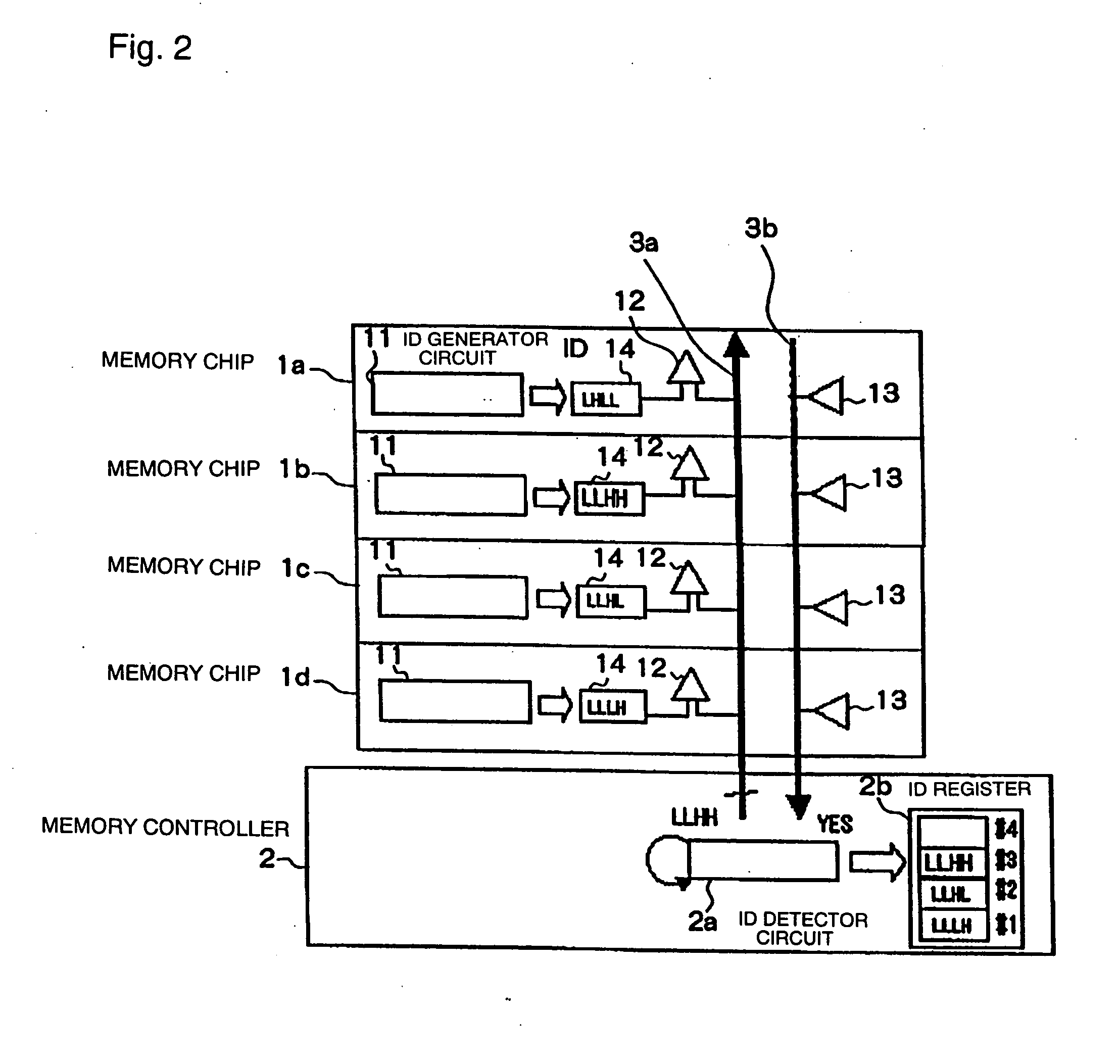Stacked semiconductor device and semiconductor chip control method
a technology of semiconductor chips and control methods, applied in semiconductor devices, digital storage, instruments, etc., can solve the problems of plurality of chips performing the same operation, increase in the size of chips associated with improvements in the functions of lsi chips, and inability to prevent process-based miniaturization
- Summary
- Abstract
- Description
- Claims
- Application Information
AI Technical Summary
Benefits of technology
Problems solved by technology
Method used
Image
Examples
first embodiment
[0107]FIG. 3 is a block diagram illustrating ID generator circuit 1 shown in FIG. 2. In FIG. 3, components identical to those shown in FIG. 2 are designated with the same reference numerals.
[0108] In FIG. 3, ID generator circuit 11a includes ring oscillator (self-running oscillator) 11a1, timer 11a2, counter 11a3, and selector 11a4. Ring oscillator 11a1 generates a high frequency signal (at a pulse period of several ns). Ring oscillator 11a1 includes a plurality of transistors 11a1a. Timer 11a2 generates a time-up signal at intervals of several microseconds. Counter 11a3 counts the number of pulses delivered from ring oscillator 11a1. Selector 11a4, responsive to the time-up signal generated by timer 11a2, forces ring oscillator 11a1 to stop supplying its output to counter 11a3, thereby stopping the counting of counter 11a3.
[0109] ID generator circuit 11a defines ID 14 as indicated by the counted value on counter 11a3 at this time.
[0110] Each of the stacked memory chips 1a-1d can ...
PUM
 Login to View More
Login to View More Abstract
Description
Claims
Application Information
 Login to View More
Login to View More - R&D
- Intellectual Property
- Life Sciences
- Materials
- Tech Scout
- Unparalleled Data Quality
- Higher Quality Content
- 60% Fewer Hallucinations
Browse by: Latest US Patents, China's latest patents, Technical Efficacy Thesaurus, Application Domain, Technology Topic, Popular Technical Reports.
© 2025 PatSnap. All rights reserved.Legal|Privacy policy|Modern Slavery Act Transparency Statement|Sitemap|About US| Contact US: help@patsnap.com



